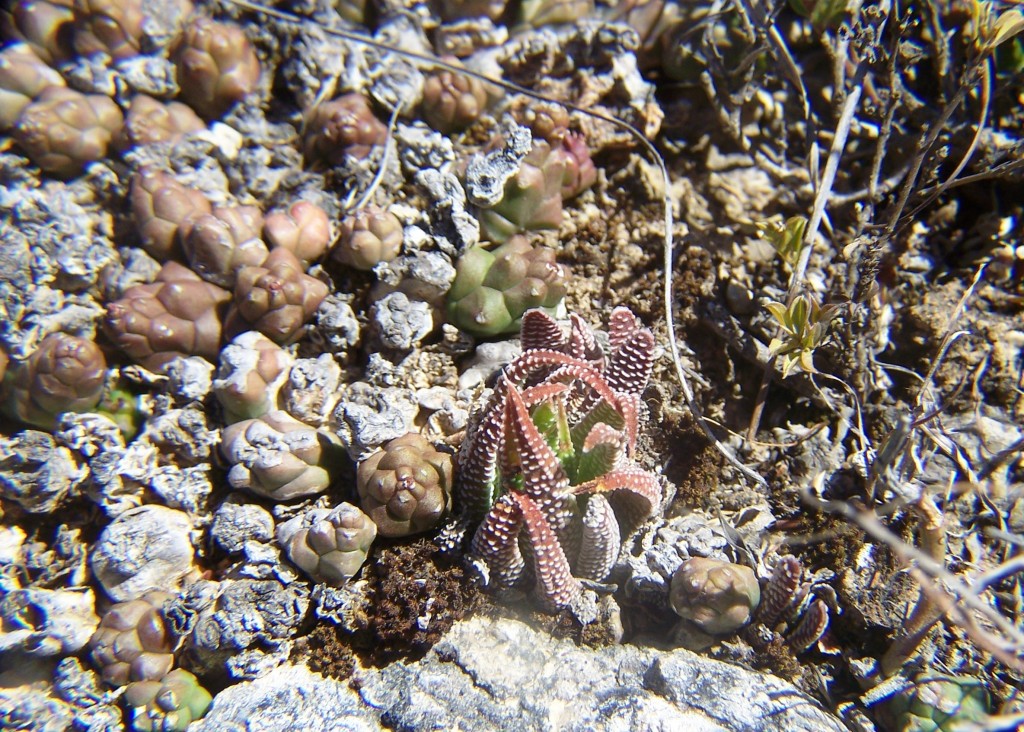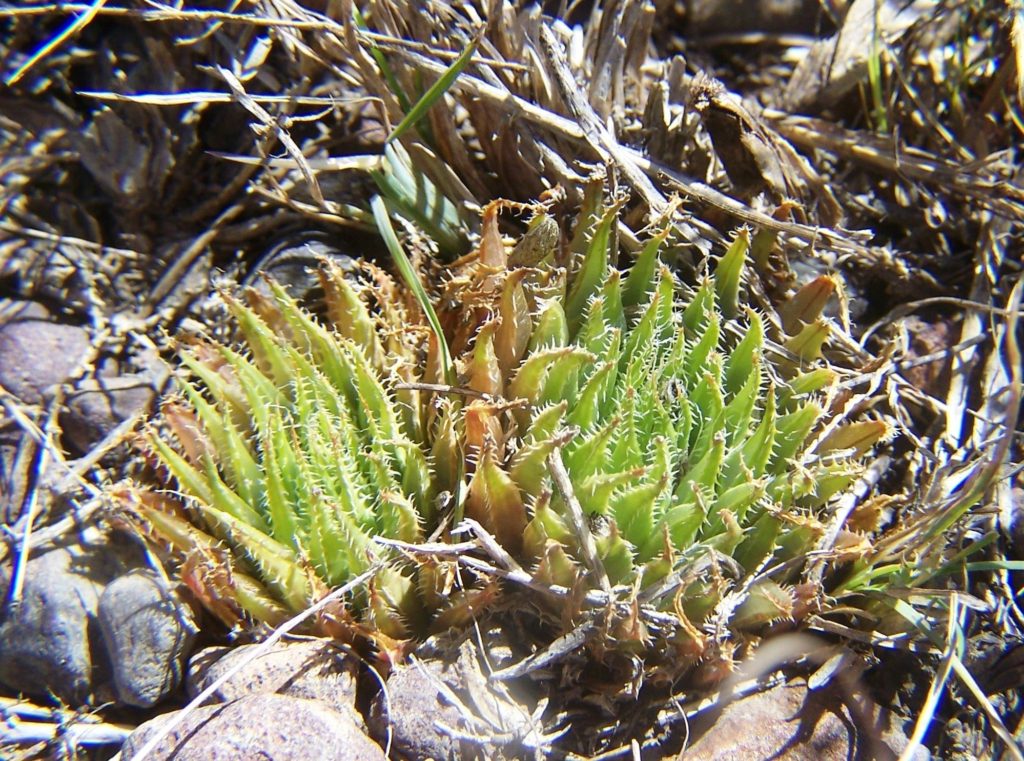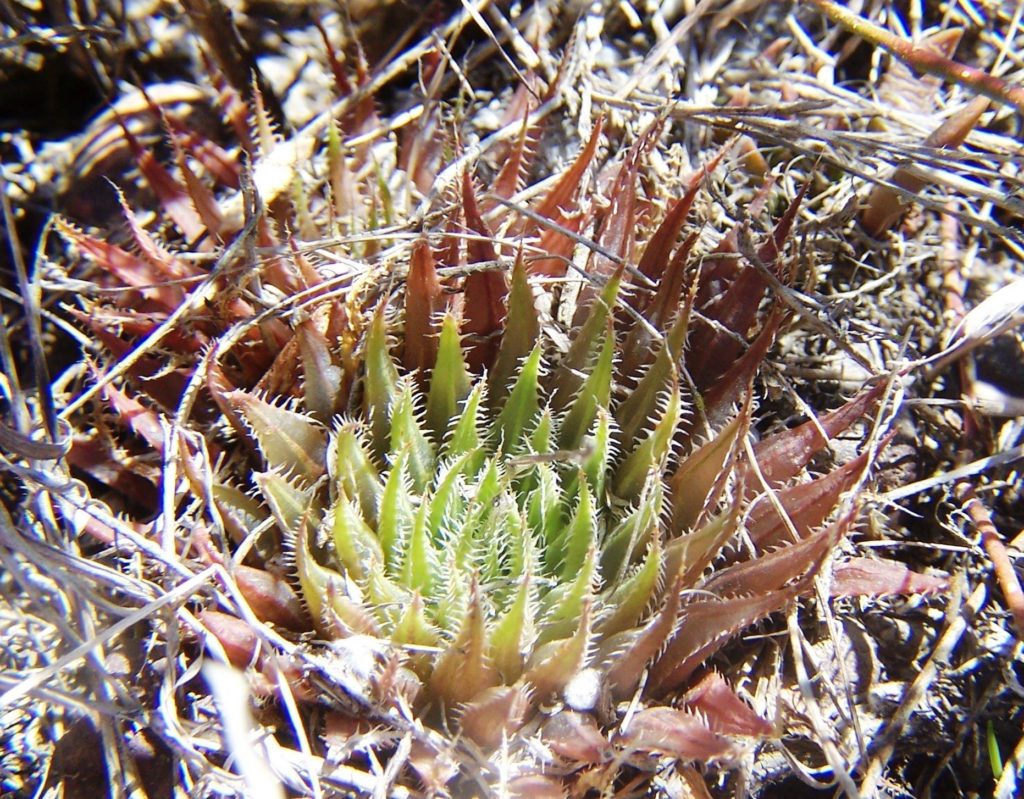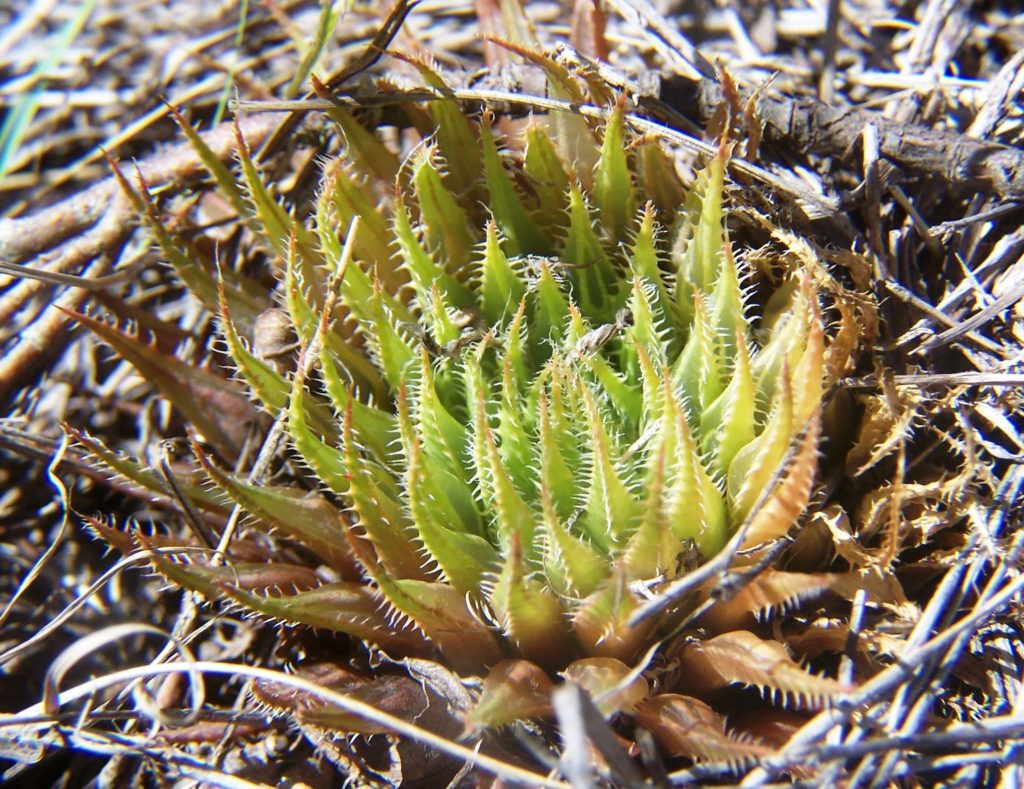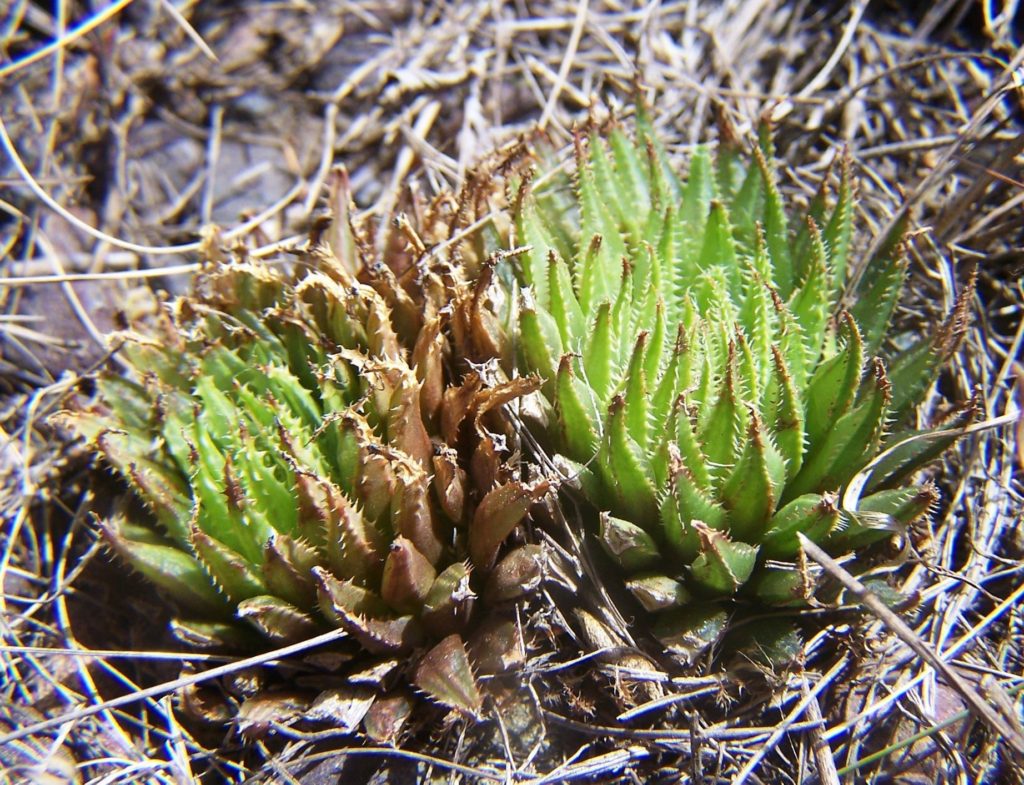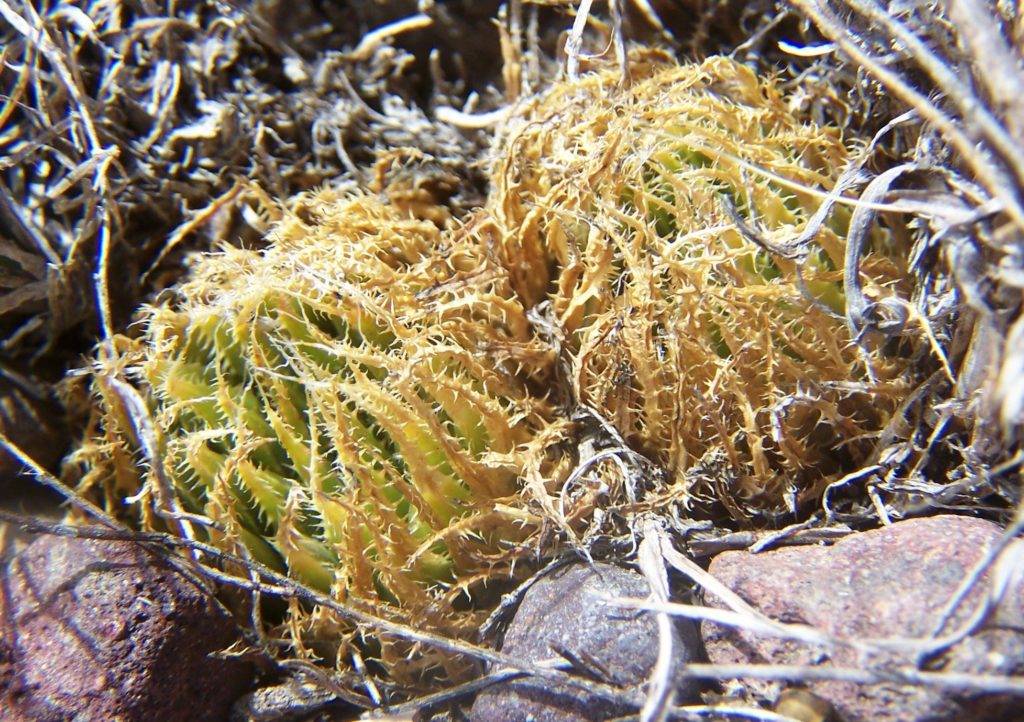77. 2019.8.12, MBB7776 between Riversdale and Heidelberg – Coming to the end of the first chapter of my story. Lets now try something while we contemplate the reality of the difference between mutica and retusa. What are these next 8 plants? I suggest that they are H. mutica – but it is your opinion that matters now. What do you think?
Let me just add something about this DNA sequencing stuff. The technocrats assume that if they have a sample labelled H. retusa, it comes from an entity that truly exists and can be labelled so conveniently. In the one exercise I was involved in I attempted to get the dudes to replicate. How far it got I do not know beyond the first sequencing run presenting some very uncomfortable results. My comments and questions got me thrown out of the project.
Lawrence Loucka: ‘Replicate’ is a statistics term that means to use multiple samples, make multiple readings, to determine variation within (not between) populations. Because of time and expense botanical DNA studies have generally had insufficient sample sizes to be statistically significant. But costs are coming down and quality is improving.
Stephen Boisvert: Replication just means to repeat the experiment or measurement and get the same result. It can be completely meaningless if you don’t satisfy the requirements for philosophical validity – face validity – construct validity or logical validity – predictive, concurrent, discriminant and convergent. Looks like Bruce’s complaint here is with construct validity, concurrent and discriminant/convergent.
The first issue is a bit more complicated. It’s conceptual at the level of what you think a “species” is. Botany (and zoology) has a strange history on this with one with their notion of Type plants (and animals) where a single instance is held as the defacto species standard and entails a whole host of problematic philosophical assumptions (like a platonic ideal form or aristotelian essentialism) which never quite fit the real physical world or the use of concepts in language and has huge sampling problems (one individual chosen to represent a purported population is extremely problematic to say the least). Still I believe if you clearly articulate your assumptions regardless of your philosophical positions on concepts (platonic idealism, aristotelian essentialism, Wittgensteinian familial resemblance and so on) you should be able to produce useful and communicable knowledge. The big problem is being clear enough both in your own head and in your writing about your assumptions which is difficult because of lot of this is stuff we learn and know at an implicit rather than explicit level. You see this when people can identify and distinguish plants but if you ask them how they differentiate they sometimes can’t tell you. They just know implicitly without explicit rules.
Bruce Bayer: Stephen – I truly appreciate your comments. I have been criticized because I many times cannot identify a Haworthia unless I know where it comes from. Written descriptions are fairly useless with many examples to demonstrate the fact. How do you describe the variation in a population when it is difficult to describe a single plant? No matter how unclear the head, the fact is as you see in these last pictures posted, plants from quite different populations (too often identified as different species) can be identical. What really bothers me is that other peoples heads are not clear enough to grasp this statement. I have been pondering explaining my expressed discomfort with the Haworthiopsis paper in Phytotaxa where my discomfort is seen as a personal attack on the authors.
Ronel Kloppers and Sean Gildenhuys have written an outstanding paper with respect to nomenclature and technicality of taxonomy, but which I regard as weak in both scientific method and “philosophy of concepts”. I am hesitant to deal with the issue because I am not in their intellectual league and not in the least sure where my convictions stem from! I am however extremely concerned that the methodology successful perhaps in Haworthiopsis will be a total disaster if applied to Haworthia stricto sensu.
———-
This next set is just another lot from the same place west of Riversdale. Silly me. I think the first would fit comfortably with H. mutica and these now with H. retusa.
Early on in this series I started by going north and west from the Duiwenhoks River south of Heidelberg, and moved west to H. mutica. Now I skip four very relevant populations and travel eastwards. What is happening is we are going to H. retusa. It will take us across area already covered in detail in the Updates under the cover of mutica var nigra. [1] After that north-east of Riversdale to Kruisriver, further east to the Platkop area, to east Albertinia, to the Gouritz and H. pygmaea. There are three directions northwards to H. emelyae untouched and two southwards that link mirabilis and retusa.
[1]
Volume 2, Chapter 6:- How to understand Haworthia mutica var. nigra
Volume 5, Chapter 10:- Haworthia ‘enigma’ and H. mutica var nigra
Volume 7, Chapter 1:- Haworthia retusa ‘nigra’ – Another grand finale.
78. 2019.8.14, MBB7794 – SE Heidelberg. Unfortunately I do not have pictures of one population that used to be closer to Heidelberg that would also have been instructive. 7794 is one of 3 populations, one of which is commonly known. I would refer to these as mirabiloid retusa.

